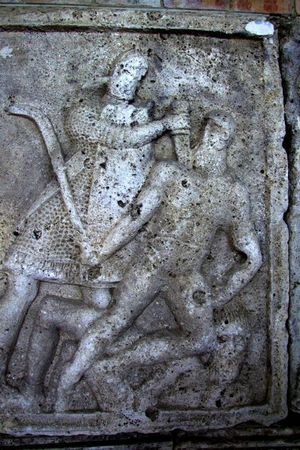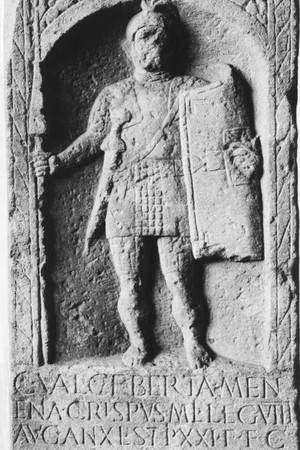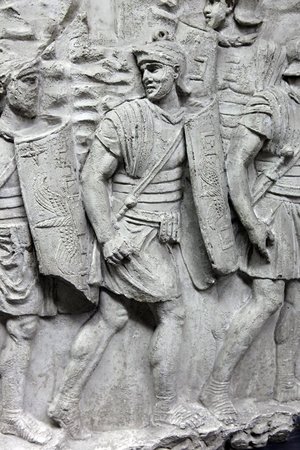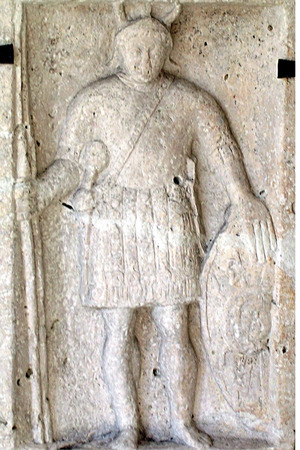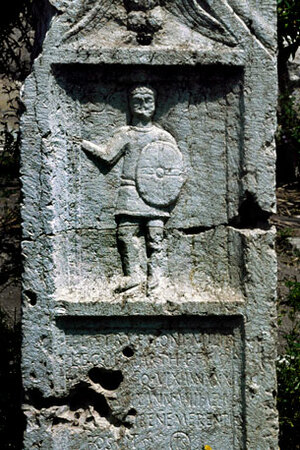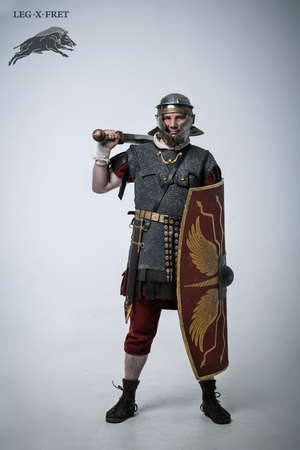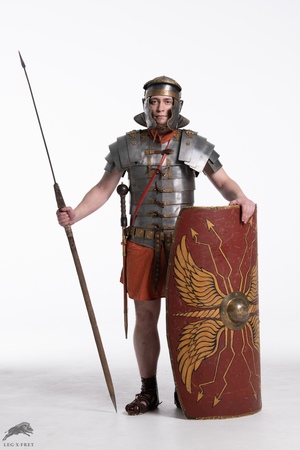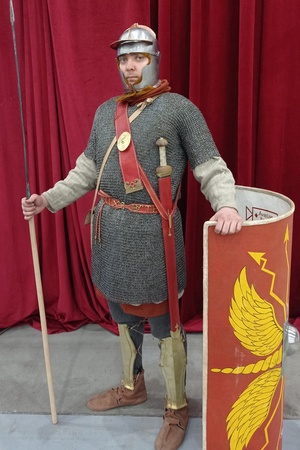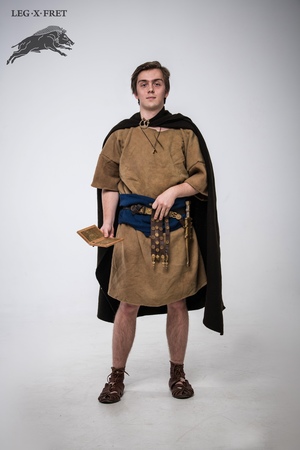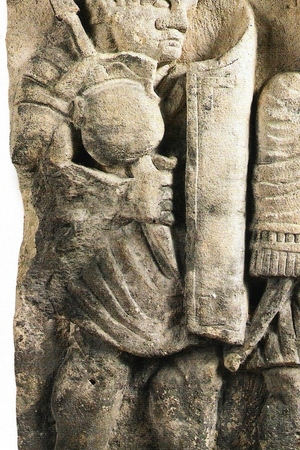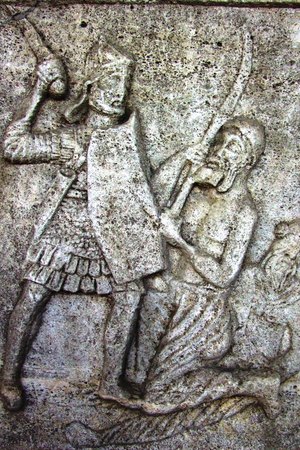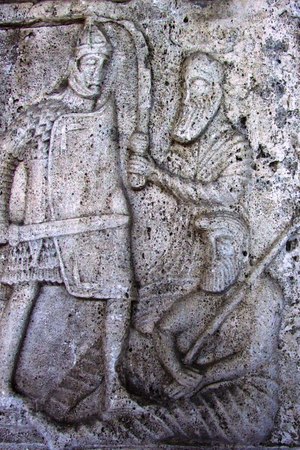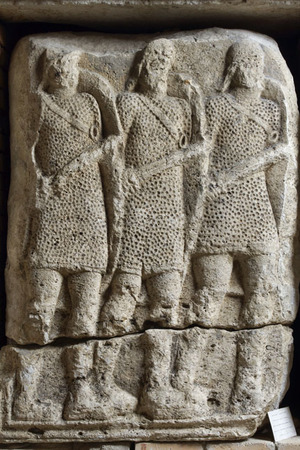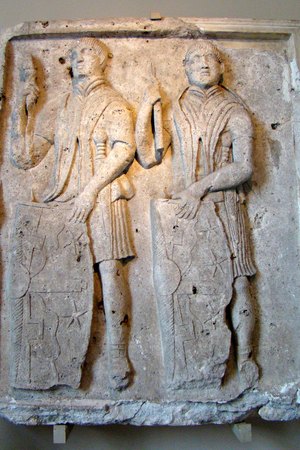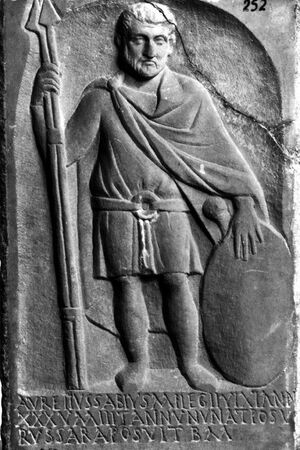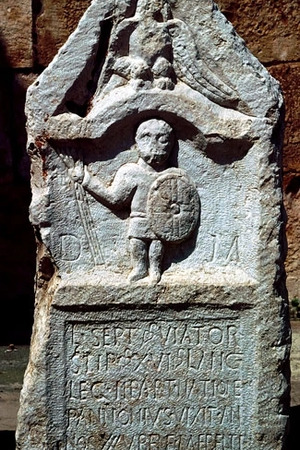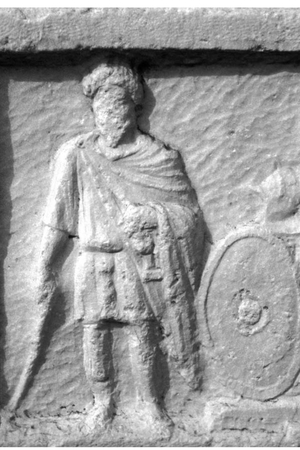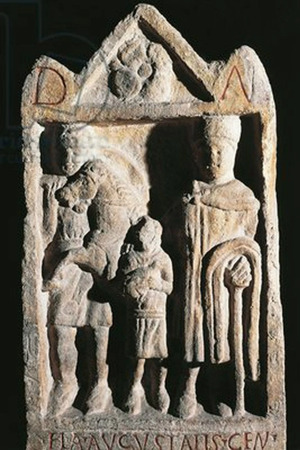Legionnaire
A legionnaire (Latin legio, genitive legionis - military assembly, from lego and legere - to gather) is a type of ancient heavy infantry, the basis of the ancient Roman state's army. The main combat unit of the legion. Legionnaires were recruited exclusively from citizens of the Roman state. Legionnaires were a kind of "universal soldiers": they had weapons not only for close combat - gladius, pugio and scutum, but also for long-range - pilum. Some historians call legionnaires "heavy shooters", once again emphasizing the importance of throwing weapons in the legionnaire's equipment.
Legionnaire's Career
Promotion in service was largely determined by the military's pedigree. Many wealthy patricians did not start service from the bottom, but immediately occupied commanding positions.
Ordinary citizens of the empire, who entered military service without bribes, expected quite modest career prospects.
The key that opened the way to honors was courage and bravery on the battlefield. Josephus Flavius told how during the storming of Jerusalem, Roman warriors competed with each other in courage, "and each hoped that this day would be the beginning of his promotion, if he fought bravely." The military leader, in turn, promised promotions and honors to those who would be the first to climb the city wall.
As a rule, the most intelligent and strong legionnaires were first appointed to special positions. The most achievable was the status of a decanus, however, it gave little advantage over ordinary legionnaires. More privileged positions were tesserarius or frumentarius. Showing outstanding abilities, a legionnaire could attract the attention of a centurion and become his deputy - an optio, which increased the salary and made the serviceman part of the small command staff. An optio could serve up to a centurion and stay on an increased salary in the Roman army even after completing the main term of service. This title was the maximum achievable for most residents of the empire. It should also be noted that there were a huge number of varieties of centurions, differing in military hierarchy. The highest rank of a centurion was called primipilus - "the first warrior of the legion". This was the last senior rank, the holder of which personally participated in combat operations. In rare cases, it was possible to get the post of camp chief - Praefectus Castrorum. There are rare cases when prefects later became governors in small provinces. In most cases, the ranks of legates and other senior officers were held by representatives of wealthy patrician families.
As a rule, the most intelligent and strong legionnaires were first appointed to special positions. The most achievable status dean, but it offered few advantages over ordinary legionnaires. The more privileged positions were the tesserary or frumentary. By showing outstanding abilities, a legionnaire could attract the attention centurion and become his deputy optio, which increased the salary and made the employee part of a small command staff. Optio could rise to the rank of centurion and remain on an increased salary in the Roman army after the end of the main service period. This title was extremely achievable for most of the empire's inhabitants. It should also be noted that there were a huge number of varieties of centurions that differed in the military hierarchy. The highest rank of a centurion was called primipilus - "first warrior of the legion". This was the last rank in terms of seniority, the bearer of which personally participated in combat operations. In rare cases, it was possible to get the post of head of the camp - Praefectus Castrorum. There are rare cases when prefects later became viceroys in small provinces. In most cases, the ranks of legates and other senior officers were held by members of wealthy Patrician families.
There was also the opportunity to be transferred to an ala - Roman cavalry, first receiving the position of scout (explorator), and then decurion (decurio). After serving in the ala, it was possible to be transferred back to the infantry already at a higher position. In addition, there was a prospect of promotion up the career ladder in the standard group, where the most experienced veterans with an increased salary were taken. For example, vexillarius, Imaginifer, Signifer and other types of standard-bearers could eventually serve up to an aquilifer - one of the most important and responsible positions in the legion.
Legionnaire's Equipment
The equipment of a legionnaire for the period of the 1st-2nd century AD could consist of the following elements:
Fabric/leather items:
Metal protective equipment items:
Weapon:
Additional elements:
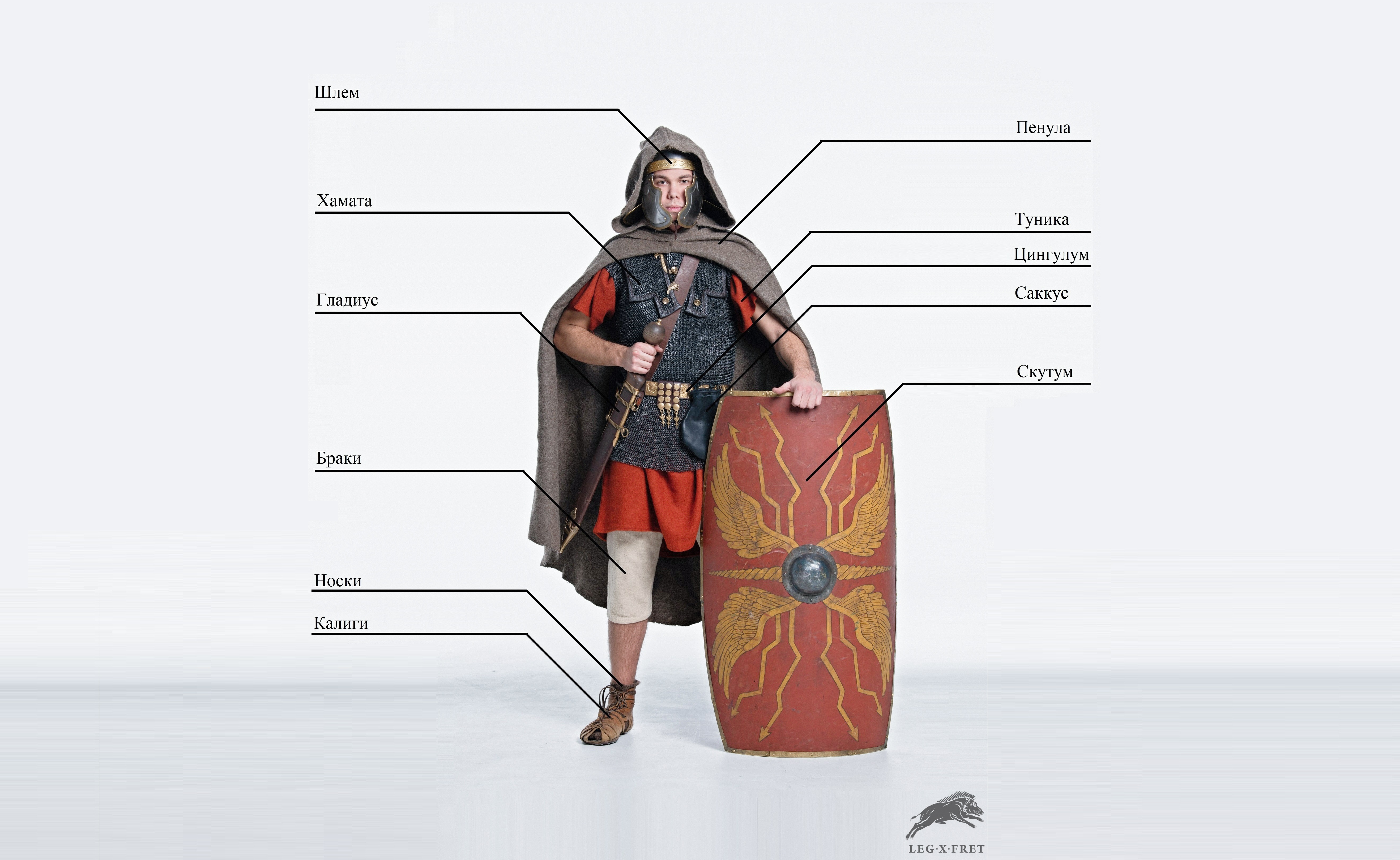
Not all of the above-mentioned equipment items were necessarily and universally used. For example, according to the images that have come down to us, legionnaires could be without armor at all. Manica and, especially, greaves were not widely spread (the latter are characteristic of the later armament of legionnaires at the beginning of the 2nd century). The same applies to simpler equipment items, like bracae and subarmalis.
Alternative Equipment For Legionnaires
In addition to the classic panoply of a heavily armed infantryman, there was also an alternative set of equipment, and it was used in the legions, and not somewhere else. Unlike the classic legionnaires, whose weapons included the gladius, barrel-shaped scutum, and pilum, these legionnaires could be equipped with lenticular shields and / or even spears (perhaps the reliefs show lanceae instead of pilums).
According to one version, they may have been partially depicted with equipment from their native places or from past duty stations (this would explain the presence of equipment used by Roman soldiers of a later period). It is especially important to note that this trend has been noticeable since the middle of the 1st century AD, long before the widespread use of such equipment in the legions of the early 3rd century.
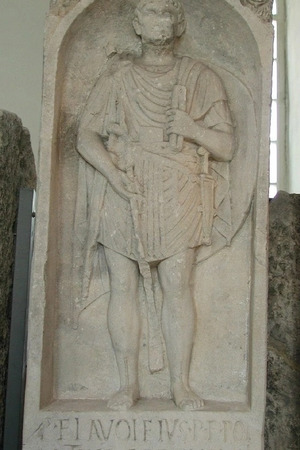 Tombstone of the legionnaire Flavolei Korda, Legio XIIII Gemina, c. 43. An oval shield, probably convex in shape, is clearly visible behind his back
Tombstone of the legionnaire Flavolei Korda, Legio XIIII Gemina, c. 43. An oval shield, probably convex in shape, is clearly visible behind his back Reenactment
You should carefully choose your time period, as the equipment from the Republican period to the late Empire changed quite significantly. If we consider the most typical periods for ancient reconstruction in Russia (which our club also adheres to), there are two most common images: a legionnaire from the second half of the 1st century AD and the first half of the 2nd century AD. The main differences lie in the helmet, lorica (if segmentata is used - Corbridge for the early period legionnaire, Newstead - for the late period), and the suspensions on the cingulum (in the uniform of the 2nd century legionnaire they are much shorter, or even absent). A greave on the left leg is an attribute of a later period legionnaire.
There are also less obvious differences in armament: the pugio should be of the second type for the 1st century legionnaire, and of the third type for the 2nd century legionnaire, and the "Fulham" type gladius can only be used by a 1st century legionnaire.
You should start creating an image with the simplest things that are included in the minimum set: tunic, shoes (caligae/calcei), cingulum.
Related topics
Legion, Auxilia, Paenula, Sagum, Focale, Subarmalis, Tunic,
Literature
- Vus O. V. Mobile grouping of the Roman army in Taurica at the end of the III-V centuries AD. 2016, Issue 8, pp. 357-376.
- Dando-Collins, Stephen. Legions of Rome. The complete history of all legions of the Roman Empire / Translated from English by N. Y. Zhivlova.
- Eliseev M. B. Remo-Macedonian wars. Legion against the phalanx. - Moscow: Veche, 2016. - 416 p.: ill. - Series "World History". — ISBN 978-5-4444-4926-4.
- Zelinsky F. F. Roman Empire. - St. Petersburg: Aleteya, 2000. - 496 p — - ISBN 5-89329-071-2.
- Cowan Ross. Roman legionnaires. 58 B.C.-69 A.D. / Translated from English by N. A. Fenogenova. - Moscow: OOO "AST", Astrel, 2005. - 72 p.: ill. - Series "Elite troops". — ISBN 5-17-027924-8.
- Chris McNab. The Roman Army. The greatest military machine in history / Translated from English by V. L. Silaeva. - Moscow: Eksmo, 2014. - 272 p.: ill. - Series "Illustrated history of military art". — ISBN 978-5-699-74397-1.
- Mattesini Silvano. Roman legions. All about the most powerful army of the Ancient world / Translated from Italian by I. E. Andronova. - Moscow: Astrel, 2012. - 216 p.: ill. — ISBN 978-5-271-38826-2.
- Mattesini Silvano. Soldiers of Rome. 1000 years of history. Organization. Armament. Battles / Translated from Italian by I. E. Andronova, Moscow: OOO "AST"; OGIZ, 2013. - 216 p.: ill. - ISBN 978-5-17-081614-9.

 Gallery
Gallery






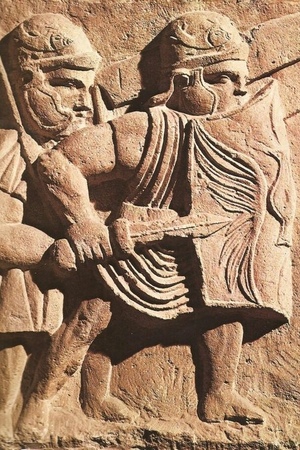 Bas-relief of the pedestals of the columns that decorated the courtyard in front of the complex of buildings of the headquarters (praetorium and principia) of the citadel of the other Roman city of Mogontiac (Latin Mogontiacum). "Land Museum", Mainz, Germany. Second half of the first century AD
Bas-relief of the pedestals of the columns that decorated the courtyard in front of the complex of buildings of the headquarters (praetorium and principia) of the citadel of the other Roman city of Mogontiac (Latin Mogontiacum). "Land Museum", Mainz, Germany. Second half of the first century AD 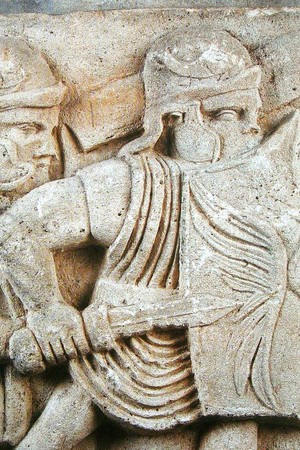 Bas-relief of the pedestals of the columns that decorated the courtyard in front of the complex of buildings of the headquarters (praetorium and principia) of the citadel of the other Roman city of Mogontiac (Latin Mogontiacum). "Land Museum", Mainz, Germany. Second half of the first century AD
Bas-relief of the pedestals of the columns that decorated the courtyard in front of the complex of buildings of the headquarters (praetorium and principia) of the citadel of the other Roman city of Mogontiac (Latin Mogontiacum). "Land Museum", Mainz, Germany. Second half of the first century AD 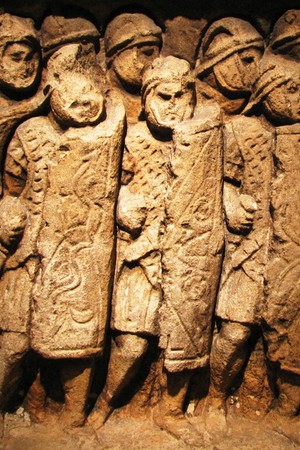 Legionnaires in the ranks. Stone bas-relief from Glanum (Saint-Remy de Provence-F). Gallo-Roman Museum of Fourvières-Lyon, 1st-2nd century AD
Legionnaires in the ranks. Stone bas-relief from Glanum (Saint-Remy de Provence-F). Gallo-Roman Museum of Fourvières-Lyon, 1st-2nd century AD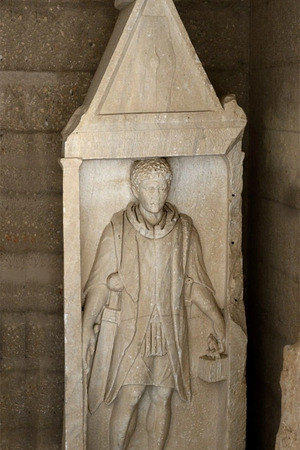 Tombstone of the legionnaire Gaius Valerius Valens, VIII Augusta, 1st century. It is kept in the Museum of Corinth. The hexagonal shield is clearly visible from above
Tombstone of the legionnaire Gaius Valerius Valens, VIII Augusta, 1st century. It is kept in the Museum of Corinth. The hexagonal shield is clearly visible from above